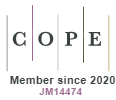How the Seven Deadly Sins can Lead to Project Failure
DOI:
https://doi.org/10.5585/gep.v3i3.129Abstract
For more than forty years, the project management landscape has seen textbooks, journal articles and presented papers discussing the causes of project failures. Unfortunately, many of the failure analyses seem to look at failure superficially rather than in depth. When trying to discover the root cause of a failure, we usually look first in the contractor’s company for someone to blame rather than in our own company. If that doesn’t work, then we begin climbing the organizational hierarchy in our own company by focusing on the project team, followed by the project manager. Once we find someone to blame, the search seems to end and we feel comfortable that we have discovered the cause of the failure. It is human nature to begin finger-pointing at the bottom of the organizational hierarchy first, rather than at the top. Yet, more often than not, the real cause of failure is the result of actions (or inactions) and decisions made at the top of the organizational chart than at the bottom. It is also human nature to make decisions based upon how we are affected by the Seven Deadly Sins, namely: envy, anger, pride, greed, sloth, lust and gluttony. Decisions made based upon the Seven Deadly Sins, whether they are made at the top or bottom of the organization, can have dire consequences on projects. Sometimes the sins are hidden and not easily recognized by ourselves or others. We simply do not see or feel that were are committing a sin. The Seven Deadly Sins affect all of us sooner or later, even though we refuse to admit it. Some of us may be impacted by just one or two of the sins, whereas others may succumb to all seven. What is unfortunate is that the greatest damage can occur on projects when the sins influence the way that senior levels of management must interface with projects, whether as a project sponsor or as a member of a governance group. Bad decisions at the top, especially if based upon emotions rather than practicality, can place the project on a destructive path even before the day the project is kicked off.
DOI:10.5585/gep.v3i3.129
References
Kerzner, H.Project Management Case Studies, 3rd Edition, John Wiley and Sons Publishers, Hoboken, 2009; P.425.
Kerzner, H. Project Management Case Studies, 3rd Edition, John Wiley and Sons Publishers, Hoboken, 2009; Case Study: The Rise, Fall and Resurrection of Iridium; A Project Management Perspective; P.351.
www.wikipedia.org (Acesso on line)







